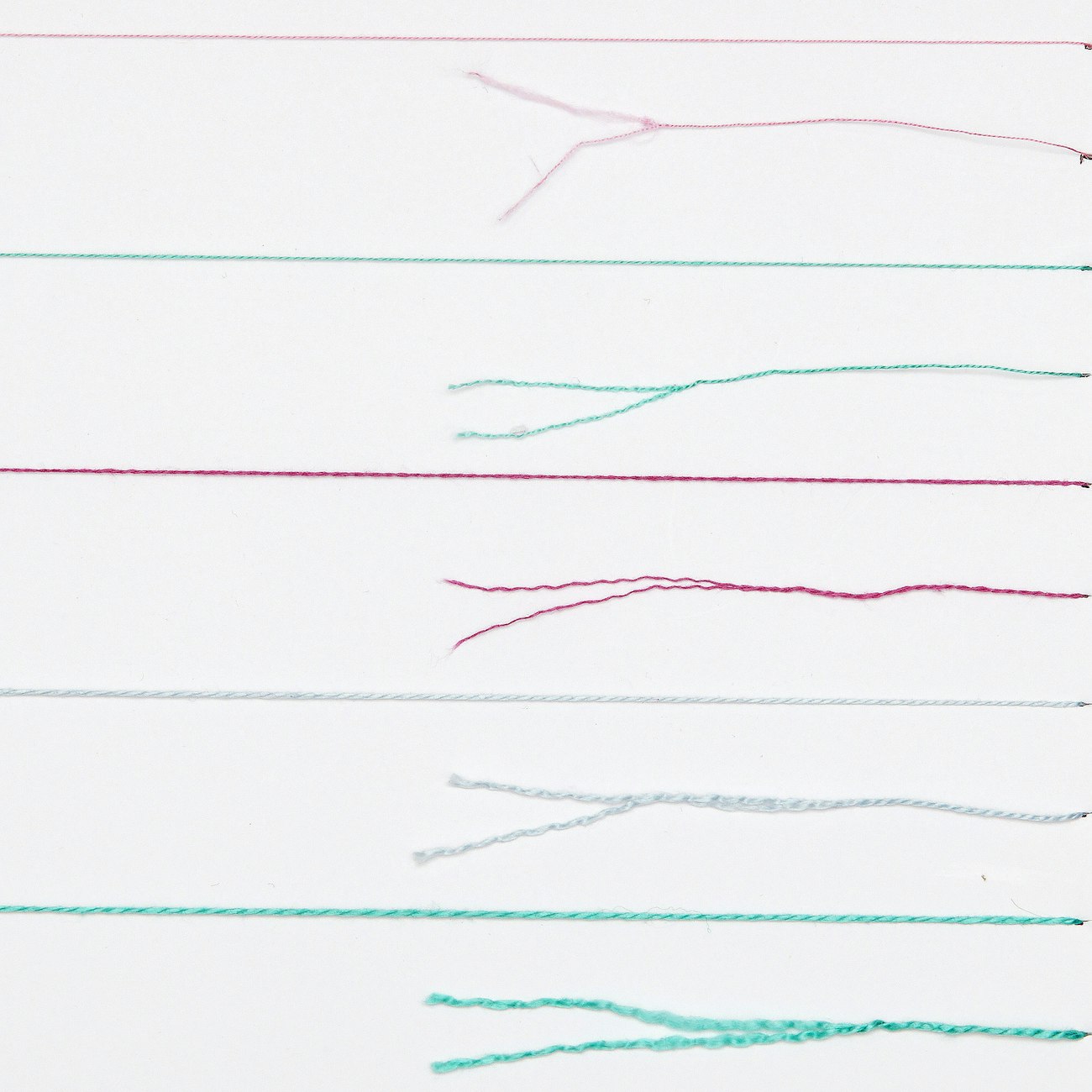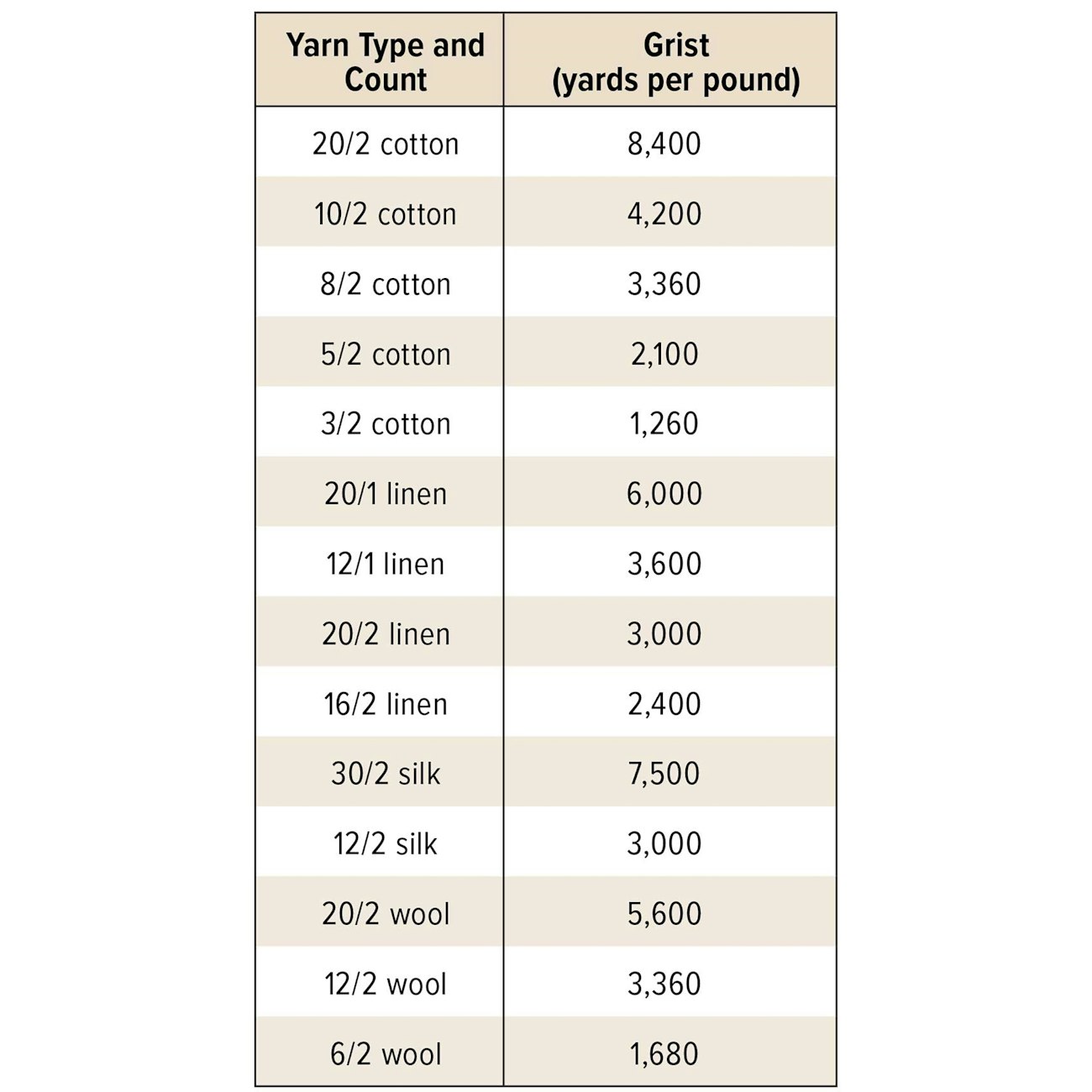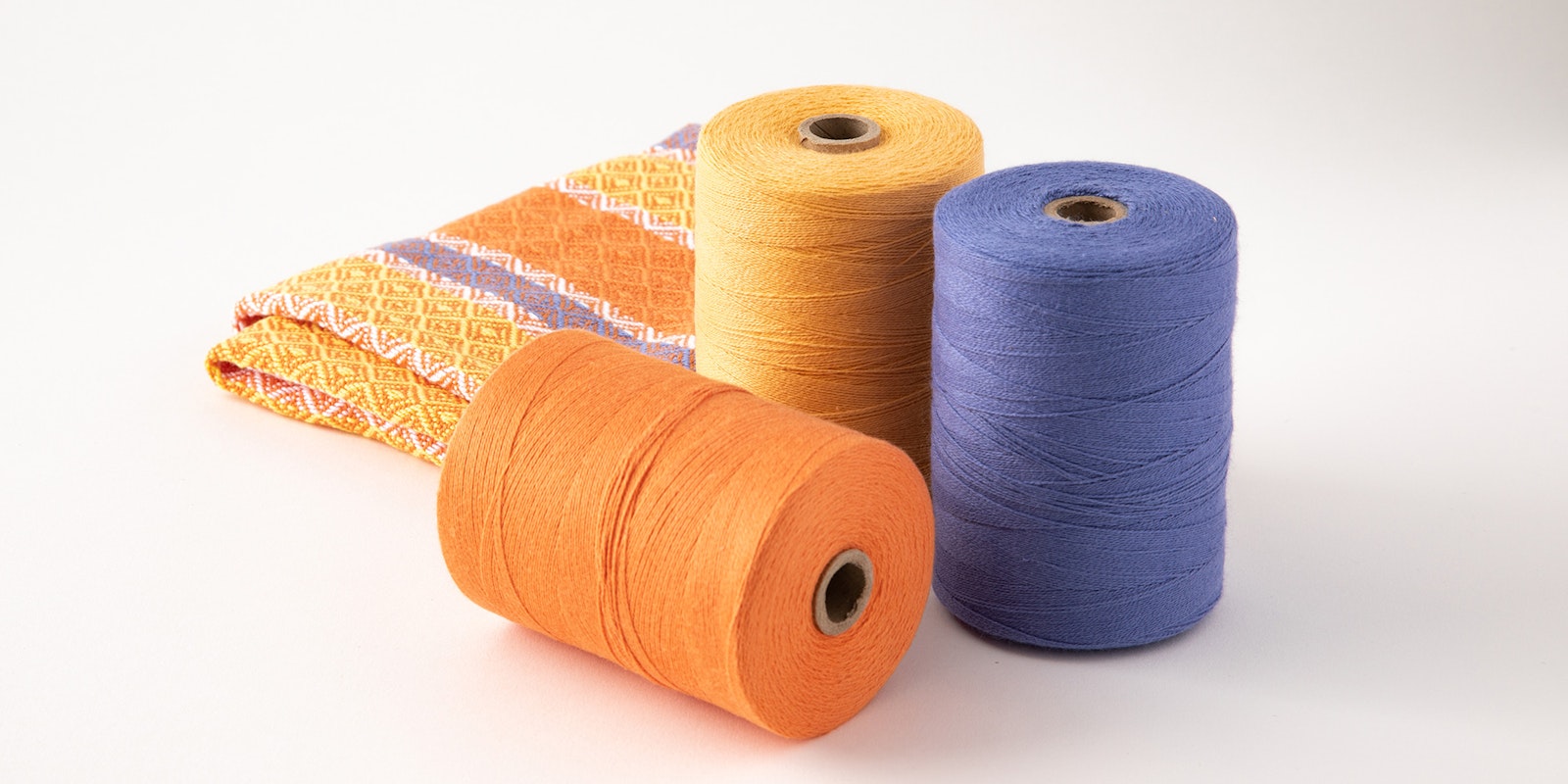Amy Tyler has decoded the mysterious measurement systems used for measuring fibers and knitting and crochet yarns. In this piece, excerpted from Spin Off Fall 2016 article “Ask a Spinning Teacher: Numbers,” learn about the count system used for weaving yarns.
Count System
Yarns that are produced for weaving are typically labeled with two numbers in what is often referred to as the “count system.” For example, you might see 8/2 cotton yarn, 20/2 linen yarn, or 6/3 wool yarn.
The second number (or the small number) indicates the number of plies of a yarn; a singles yarn is designated with a 1, a two-ply with a 2.
The first number (or the larger number) indicates the “size” of the singles in the yarn. Historically, different fibers (linen, wool, cotton) were produced by separate mills, so yarn size was standardized differently for different fibers. Regardless of fiber type, Size 1 is the thickest.
 Top to bottom: Cotton weaving yarns in sizes 20/2, 10/2, 8/2, 5/2, and 3/2. Photo by George Boe
Top to bottom: Cotton weaving yarns in sizes 20/2, 10/2, 8/2, 5/2, and 3/2. Photo by George Boe
The Weaver’s Companion lists the following yardages for Size 1 of various fibers:
cotton, spun silk 840
linen, hemp, jute, ramie 300
woolen (spun wool) 256
worsted (spun wool) 560
So a 1/1 yarn of cotton (Size 1/singles) would have a grist of 840 yards per pound.
Higher counts are multiples of Size 1 and have higher grists. For example, a 3/1 cotton has three times the grist of singles as Size 1; 3 x 840 = 2,520 yards per pound. To calculate the grist of a plied yarn, multiply the count by the Size 1 yardage and then divide by the number of plies. For example, a 3/2 cotton has a grist of 3 x 840/2, or 1,260 yards per pound.
 Weaving Yarns Count System, from The Weaver’s Companion
Weaving Yarns Count System, from The Weaver’s Companion
For a given fiber type, the higher the count, the thinner the yarn. But note that the greater the number of plies, the thicker the yarn.
Confusingly, some sources follow a convention where cotton and linen have the size first followed by the number of plies, while wool has the number of plies first.
Whew—that explains what all of those numbers mean. Thank you, Amy! Find more great weaving resources at Handwoven, including Handwoven’s Master Yarn Chart.
Looking for more information on numbers and yarn? Find the complete article in the Fall 2016 issue of Spin off.
Also, remember that if you are an active subscriber to Spin Off magazine, you have unlimited access to previous issues, including Fall 2016, in the Spin Off Library.
Resources
- van der Hoogt, Madelyn. The Weaver’s Companion. Loveland, CO: Interweave, 2001.
Amy Tyler lives in Lake Ann, Michigan, where she loves numbers as much as she loves spinning. She counts the steps every time she climbs the stairs. But she’s pretty laid-back about numbers and fiber. She writes about fiber, numbers, and not numbers in her blog, www.stonesockfibers.com.
Originally published April 1, 2019; updated June 6, 2022; updated May 19, 2025.

